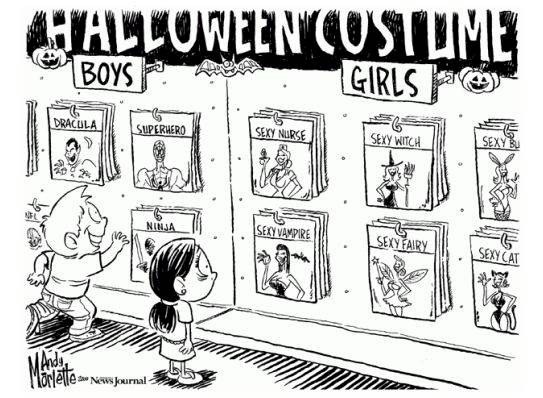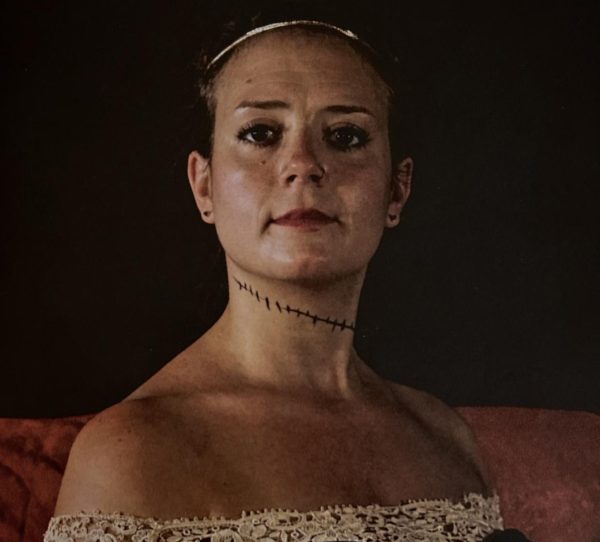The Constraints of Trick or Treating

Spooky Sexism: Halloween Costumes Confine Women To Gender Roles throughout Examples Of Gender Roles – World of Examples
You walk into your local Halloween store, what do you see in the displays? Is it young girls in police costumes and doctor outfits? Young boys dressed as innocent animals, or in nursing scrubs? I would have to answer, on behalf of almost all Halloween stores with a big “No!”. The complete opposite, in fact, is what is typically seen. Girls dressed as a princess, or cat, and boys dressed as police officers, and detectives. But why?

I grew up believing that Halloween was a day for individuals to be creative and make themselves anything, and anyone, they wanted. So why divide costumes into female and male categories? Why place any sort of idea into a child’s head that in order to be what they see displayed, they have to also be the gender it is attached to? These gender distinctions can have a permanent effect on how a child perceives their gender role as they mature. We are narrowing a child’s set of interests by labeling that interest with a specific gender. How is a seven year old girl ever supposed to see herself as being a firefighter, if she only sees male firefighters?

Famous clinical psychologist Jean Piaget and his findings were useful when analyzing gender roles in Halloween costumes. His theory of cognitive development being the most helpful. One of his most touched on points in this theory was his idea that children are not passive, instead they actively select and interpret what they see, hear, and feel. So the ways society portrays females and males, is absorbed and interpreted by the individuals surrounding the cultural norm. Boys costumes are more adventurous and fun whereas girls costumes revolve more on appearance and tend to be more tight fitting. What could those two types of outfits do to influence a child? They show the child the supposed traits society values most about their gender. Continuing to display these gender divided costumes will further construct the ways a child sees themselves in society later on.
You may think the answer is something as simple as just shopping in the boys section, but, I see the solution as something much more simple; completely cutting out gender marketing. Articles of clothing don’t have genders anyways.







